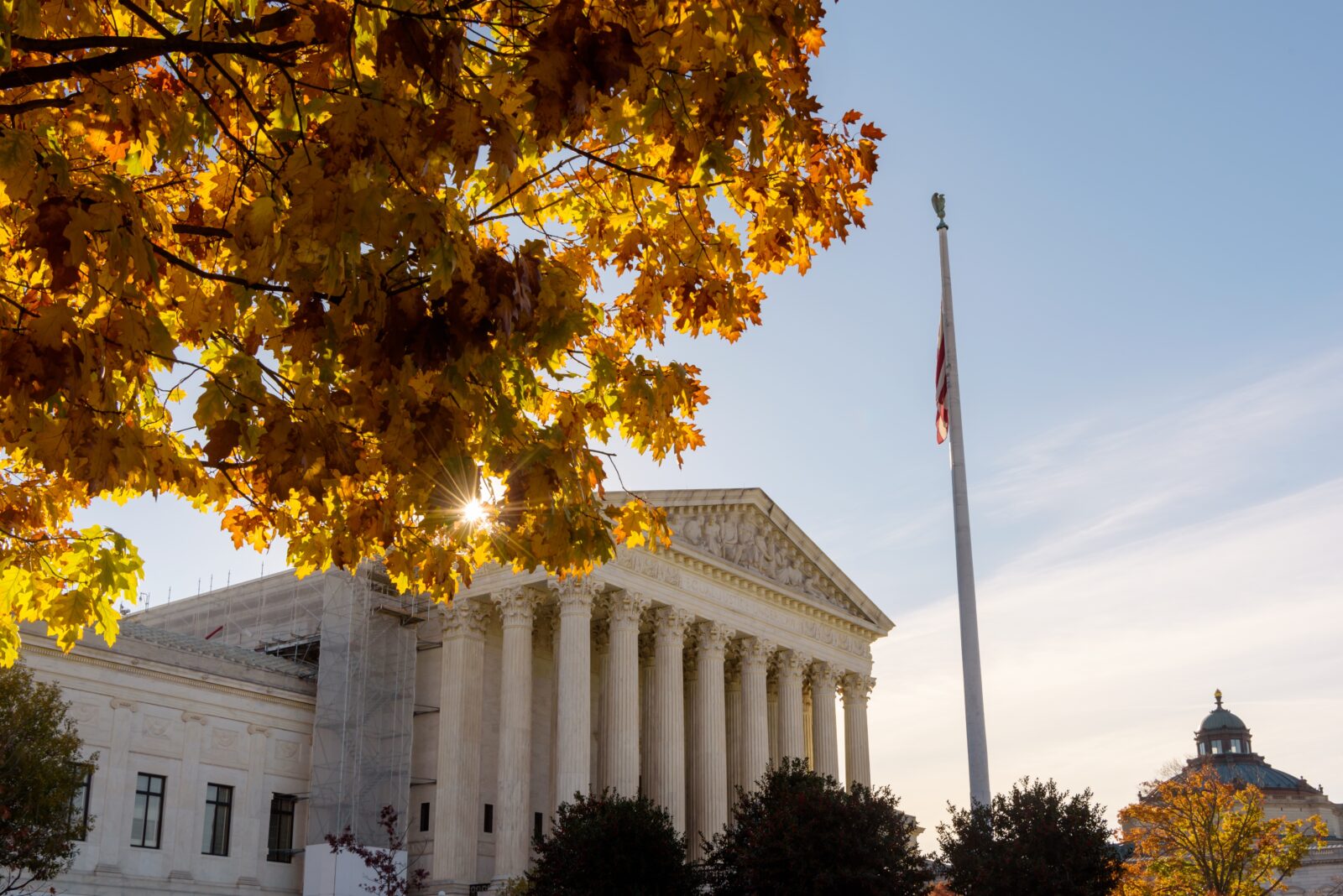
The following speech was delivered on September 25, 2025 in Washington, DC, at the Road Gang Luncheon by Eric Beightel, ESA’s Federal Strategy Director. In it, Eric highlights surface transportation reauthorization as a chance to modernize permitting—protecting NEPA’s core principles, strengthening public involvement, and streamlining project delivery to achieve faster, more predictable, and environmentally responsible infrastructure outcomes. Learn more about The Road Gang on their website: https://www.theroadgang.org/home/.
Thank you for having me here today. I’m grateful to be back in DC to talk about surface reauthorization and the road ahead for permitting reform as part of those broader discussions. Thanks to Nate Macek for the initial outreach and Susan Binder for setting this up. I’m looking forward to the discussion with my fellow panelists and old friends.
It’s clear that we are at an inflection point when it comes to permitting reform. Some call the process broken; I don’t go that far, but it’s certainly not optimized. Either way, surface reauthorization is once again the best bipartisan vehicle to fix that.
While I agree that we need to do more to improve efficiency, predictability, and transparency in the process, it’s worth taking stock of how far we’ve already come in transportation.
I’ve spent the majority of my career focused on improving the project delivery for major transportation projects. That work reaffirmed what I already knew: transportation projects, on the whole, are ahead of other sectors in project delivery.
Think about it—Congress has historically focused on project delivery reforms in transportation that have bipartisan support.
Across six reauthorizations—from ISTEA through BIL—Congress steadily tuned planning and NEPA for transportation, and those changes became the template for other sectors.
The program I oversaw at the Permitting Council—the FAST-41 program—was modeled after the Section 139 process that directs major highway, rail, and transit projects.
And while it is tempting to say that we’ve done enough—transportation is on a good path—the reality is that there’s always more that could be done to improve the process.
Recently this topic has bubbled up again with Congress actively working on permitting reform.
We have multiple legislative proposals, but one that seems to be gaining some traction is the SPEED Act. We also just recently had the bipartisan Problem Solvers Caucus introduce their permitting reform principles—no legislative text, but it serves as guideposts to their thinking and in many ways mirrors elements of the SPEED Act.
So let’s start there. The SPEED Act—introduced by House Natural Resources Chair Westerman and co-sponsored by Jared Golden, a Democrat from Maine—takes some pretty bold steps to streamline and accelerate NEPA and permitting across sectors.
Three provisions stand out as constructive:
State/tribal substitution for NEPA reviews. Similar to FAST Act Section 1309, the never-used pilot program, this would allow a state like California, Washington, or others with “mini NEPA” statutes to use their state process to satisfy federal NEPA. In theory, this reduces duplication; in practice, details will matter.
Purpose and need tied to the applicant’s goals and applicant concurrence on schedule changes. This empowers sponsors and creates predictability. It also helps defend against cooperating agency scope creep when introducing additional alternatives to meet an agency’s parochial needs.
Programmatic shelf-life extended to 10 years and simpler CE adoptions. As long as tiered documents reflect current conditions, this seems helpful.
Overall, these are rational, common-sense reforms that could help us build world-class infrastructure at the pace needed.
But here’s where I worry—there are some things in the bill that raise real concerns.
First, and most troubling for me, is the provision that changes the threshold for NEPA applicability on a project from substantial federal control to complete federal control of a project. That provision also states that grant funding alone is insufficient to trigger NEPA.
Let me say that again, the SPEED Act would amend NEPA such that federal funding that does not constitute complete control over a project’s outcomes would not trigger NEPA.
For context, the Fiscal Responsibility Act amended NEPA to exclude actions with no or minimal federal funding or federal involvement where the federal agency cannot control the outcome. The FRA amendment also clarified that financing, loans, or loan guarantees were insufficient triggers for NEPA. The SPEED Act would take that much farther and create some unintended troubling consequences.
Consider a highway expansion that crosses multiple streams, including a bridge over a navigable waterway. If NEPA hinges on ‘complete’ federal control with funding an insufficient trigger for NEPA, DOT could lose lead-agency status to permitting agencies, fracturing coordination, sidelining the “quarterback” role of the funding agency, and inviting inconsistent outcomes.
When we turn NEPA responsibilities over to regulatory agencies, the dynamic shifts substantially. As a funding agency, DOT has a vested interest in the project advancing with overall net benefit outcomes. As regulators, the U.S. Army Corps of Engineers and Coast Guard have very different perspectives on the same project.
I understand the interest in further restricting the application of NEPA where the federal action is minor, but I also think that in our urgency to minimize or reduce the role of NEPA, reforms like this fail to anticipate how such a change could make the situation worse. Do we really want the permitting agencies to quarterback the NEPA process for transportation projects?
Another provision in the SPEED Act that gives me pause is the limit on an agency’s duty to consider “new” information once the NEPA process has started. Agencies would be barred from delaying a document to wait for new data and would not be required to consider publicly available information that arises mid-process.
Barring agencies from considering new public information mid-process risks sidelining scoping input and discourages public review and comment. That’s contrary to the fundamental purpose of NEPA: federal decisions made with eyes wide open—fully informed by science, evaluation of reasonable alternatives, and consideration of public input before we act.
Now, we can’t evaluate these proposals in a vacuum. We must also acknowledge the disruption from this Administration to the status quo of NEPA and environmental review and how those changes influence how we think about permitting reform.
To be fair, I’d argue that transportation has emerged mostly unscathed compared to other agencies because of the explicit direction in statute on how to conduct planning and environmental reviews. Other agencies do not have that security blanket and as a result, we are seeing some inconsistencies in how agencies are approaching NEPA.
With CEQ’s government-wide rules rescinded, agencies now rely on uneven guidance. Basics many of us took for granted—draft circulation, “context and intensity” of impacts—are no longer universal, creating potential for conflict in process and transparency.
I worry particularly about the optional public circulation of draft documents. The statewide and metropolitan planning process and subsequent project reviews rely heavily on public involvement and input. Under current agency NEPA guidance, the Coast Guard or the Department of Interior may choose not to circulate their NEPA documents for public review, creating a procedural conflict with DOT actions.
It’s all a bit of a mess—but that also means that it’s ripe for repair. If we are going to tear it all down—upend the way we think about NEPA and permitting—then we should use this opportunity to think about how we want to build it back. What are the essential elements of environmental review and permitting that are non-negotiable, the structural bones of the process that inform decisions and facilitate better outcomes?
There are a few things that we could consider in the next reauthorization that would course correct the current disfunction across government and I have some ideas about targeted reforms specific to transportation to consider.
First – looking at the whiplash we have all experienced with NEPA over the last 5 years with the first Trump NEPA Rule, the two phases of the Biden NEPA rules and now, simply, the lack of NEPA rules. The lack of consistency and certainty creates risk in project planning and development.
There was a time when cracking open the NEPA statute was a third-rail issue by folks of my political persuasion. We repeated the mantra that it was a slippery slope that would undermine the fundamentals of the statute. I’ll not opine whether that doom and gloom position was correct because the horse is out of the barn with the Fiscal Responsibility Act and numerous subsequent legislative proposals.
So, if we agree that NEPA is ripe for further updating, how do we fix it?
I suggest that we should codify NEPA’s essential elements.
We can’t continue to subject ourselves to extreme shifts in policy based on who occupies the White House. Instead, let’s look at the fundamentals of NEPA, what works well and what provides for consistency across agencies, and let’s codify it. Here are three changes to NEPA I’d like to see:
- We should enshrine public involvement in the NEPA process. No more agency discretion based on schedule or other factors, we should encourage the public to engage but also establish guardrails on that engagement to limit the opportunity for judicial relief to those that submit substantive comments during that process.
- NEPA should explicitly recognize the role of a funding agency in championing the process, strengthening the role of project funders as quarterbacks in NEPA and move away from this idea that funding alone (regardless of how much) is insufficient to trigger NEPA and leaving it to the regulators to evaluate the project.
- We should amend NEPA to be more like the 139 process and require all EISs across government to create coordination plans, hold agency scoping meetings and develop permitting timetables that are posted to the Federal Permitting Dashboard.
Once we’ve solved NEPA for the rest of government, I do think there are some targeted areas for reform within transportation that could help us deliver projects more efficiently without sacrificing essential environmental protections. Some of these may sound familiar as I’ve brainstormed with other esteemed colleagues who have also written about these ideas.
First, let’s strengthen the Planning and Environment Linkages authority and mandate it for all likely EIS-level projects. I’ve been a PEL ambassador for a while now and it continues to frustrate me that this powerful tool is not leveraged more. If we want the NEPA process to move faster, let’s take advantage of the robust transportation planning process to make some durable decisions regarding purpose and need, range of alternatives and establishing the affected environment. It’s low-hanging fruit that could really improve timelines.
Next, stop over-engineering CEs; normalize EAs. If you’re conducting studies to prove a negative, that’s an EA.
Why are we spending months validating that there are no impacts. If there is that much uncertainty, just go ahead and do an environmental assessment.
EAs exist to answer the question – will this action have significant effects. With a one-year timeline for EAs, it’s going to take as much time as a documented CE and the process works better. We can’t be afraid of the EA – and we must stop abusing the CEs to try to squeeze much larger projects into smaller categories.
It’s time that we reconsider Section 4(f) and its relationship with Section 106 of the National Historic Preservation Act. USDOT is the only federal agency with a substantive requirement to avoid or minimize harm to historic resources, parklands, and refuges. This artifact of permitting reform of yesteryear has created an uneven playing field for transportation projects, compared to other linear infrastructure.
We should revisit this topic to determine whether 4(f) still serves its purpose or if we can bolster other elements of planning and NEPA to achieve similar outcomes without the burden of the 4(f) process.
Finally, we should look at expanding the NEPA Assignment program to allow more federal-aid recipients to assume federal responsibilities for NEPA compliance. Current law excludes large metropolitan transit providers who may have sufficient capacity to assume those responsibilities.
Why not broaden the program and encourage more state and metropolitan entities to take on more responsibility under NEPA? With significant staff reductions across the modal administrations, we are quickly losing capacity to handle the volume of projects we want to build. We should expand the NEPA Assignment program to shift that responsibility to the entities responsible for planning and delivering the projects – and who are more closely answerable to the users of the transportation facility.
These are just a few ideas that I hope would garner bipartisan support and could truly move the needle for accelerating transportation project delivery.
As I said at the top, transportation has long served as an example of bipartisan support to streamline environmental reviews and has benefitted over the years from many substantive reforms that have then translated to changes for other sectors.
I hope that Congress builds on that and creates solutions that focus on the root cause of delays, not anecdotal stories only tangentially related to the permitting process. NEPA isn’t the problem but in light of recent administrative changes, it could become a problem, so let’s fix it now when we have some momentum.
Transportation reauthorization has been the lab where permitting reform worked. Let’s keep that going:
- codify the essentials,
- modernize the tools, and
- deliver projects through a faster, more predictable process that produce measurably better outcomes for the communities they serve.
If the permitting reform doesn’t result in greater transparency, predictability and accountability, then we’ve missed the point.
Thank you and I look forward to the conversation.








